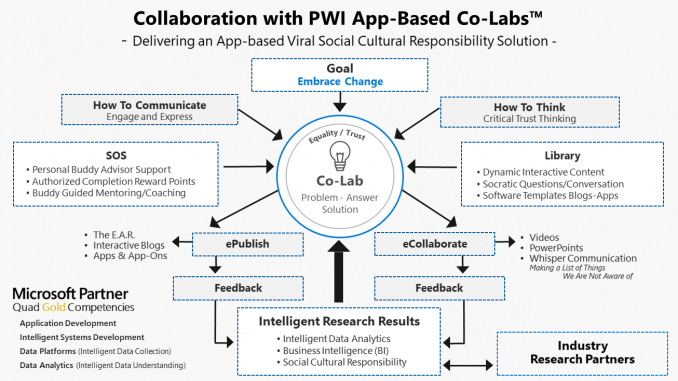
Opening Insights
Many of us often find ourselves between a rock and a hard-place. In those situations, it is important to understand the difference between a problem and a dilemma.
Informational Insights
 A Problem is a situation that can be solved. A problem has a definable answer and solution. If we have a problem we can simply: Just fix it. If we have a problem that is fixable, and we don’t fix it, that is inexcusable!
A Problem is a situation that can be solved. A problem has a definable answer and solution. If we have a problem we can simply: Just fix it. If we have a problem that is fixable, and we don’t fix it, that is inexcusable!
 A Dilemma is a different kind of problem, it is excusable. A dilemma occurs when every action we take to solve a bad situation does not work, and things always seem to go from bad to worse. When we have a dilemma, we need an innovative approach to resolve it.
A Dilemma is a different kind of problem, it is excusable. A dilemma occurs when every action we take to solve a bad situation does not work, and things always seem to go from bad to worse. When we have a dilemma, we need an innovative approach to resolve it.
To find this different and innovative approach, we must engage multiple perspectives and enter into a collaboration process. A Collaboration Laboratory (Co-Lab) offers the environment and a process for true collaborative - thinking and communication. The Co-Lab process consists of 6-10 people and is centered around three simple steps:
- Collaboratively Define the Whole Problem (Dilemma) – any problem well-defined is already half solved.
- Collaboratively Discover the Answer – as a complement to the problem.
- Collaboratively Design the Implementation Plan of the SOLUTION – as a way to fully support all stakeholders in collective pursuit of the organization mission/vision.
There are many problems in our businesses, organizations, schools and communities today. We see these problems on macro and micro levels. Ultimately, all our problems have one answer in common – CULTURE. Explore some of the common cultural problems and answers we face in the following table.
- Complete lack of unity, and no consensus on a common vision
- Everyone is locked in their own little segment, with their own little concerns, there is no interdependency
- Working for the sake of work, no shared mission, vision or goals
- Highly resistant to change
- “me-based” not we
- “rule-based” not principles
- Once people get comfy, they stop growing ideas and themselves
- No followship/leadership, just "have to" and "I don't wanna”
- No cross-generational communication, Millennials and Baby-Boomers can’t collaborate
- Develop singular vision, nurture a goal-oriented, mission-focused environment where all participants are personally invested in the shared outcome
- Support ideas promoting interoperability and cross-departmental collaboration
- In developing (or adhering to) the mission/vision, take care to revisit the "why" individuals are doing what they do within the organization
- Strengthen sense of “we”
- Return to principles in all decision-making
- Remove the vehicle for underachievement/stop-growth, install a group success mechanism
- Create Level 5 leadership at the top, provide training for individuals to become "followers"
Solution: Co-Lab…
Install the E.A.R. and provide employee incentives for its adoption.

The Co-Lab’s founding team can package the solution (implementation of the Answer) as Employee Assistance Resource (E.A.R.) Apps. The E.A.R. App is an application that fits on your desktop or mobile device. It integrates 30+ years of research and industry experience into a single, user-friendly interface. It’s a digital portal to an educational process where users learn how to think rather than what to think.
E.A.R. Apps distribute and implement the solution through an experiential educational approach pioneered in the Co-Lab, in a way that delivers recognized value and gains the support of all stakeholders.
The E.A.R. focuses on providing resources in the following areas: technology, publishing, addiction recovery, personal discovery, healthcare, legal, financial, education, travel and recreation, and legacy. Once businesses, organizations and communities join the Co-Lab they can become selected to spread their message and solutions within the E.A.R.
The E.A.R. provides the avenue for employees and management to hear and be heard. Through Co-Lab resources that support:
- Organizational Cultural Assessment
- Cultural Level 5 Development Training
- Cultural Level 5 Development Mentoring
- Cultural Level 5 Addiction/Emotional Maturity Recovery and Development
- Preventment
- Recognition/Intervention
- Treatment/Acceptance
- Aftercare/Implementation
- Cultural Communication
- Employment Expression/Publishing
- Community Development (Employment)
Possibilities for Consideration
- What if there was a way for organizations to capitalize on the ingenuity and creativity of every employee?
- What if there was a way for organizations to instill maturity, responsibility and accountability into stakeholders getting them personally invested in the vision/mission/goals?
- What if there was a way for organizations to capture, preserve and transfer wisdom across generations through mentorship?
Add Your Insight
Alone we can do so little; together we can do so much.
HELEN KELLER
